Welcome to this week’s linky where we will Discover and Explore Space Exploration!
Kids are always very intrigued by what they see in the sky and can be captivated as you tell them about rockets, astronauts and the far reaches of the universe.
Many of us adults grew up at a time when space exploration was just beginning and collectively, we are all learning so much about what exists — new stars, planets and galaxies are being discovered all the time!
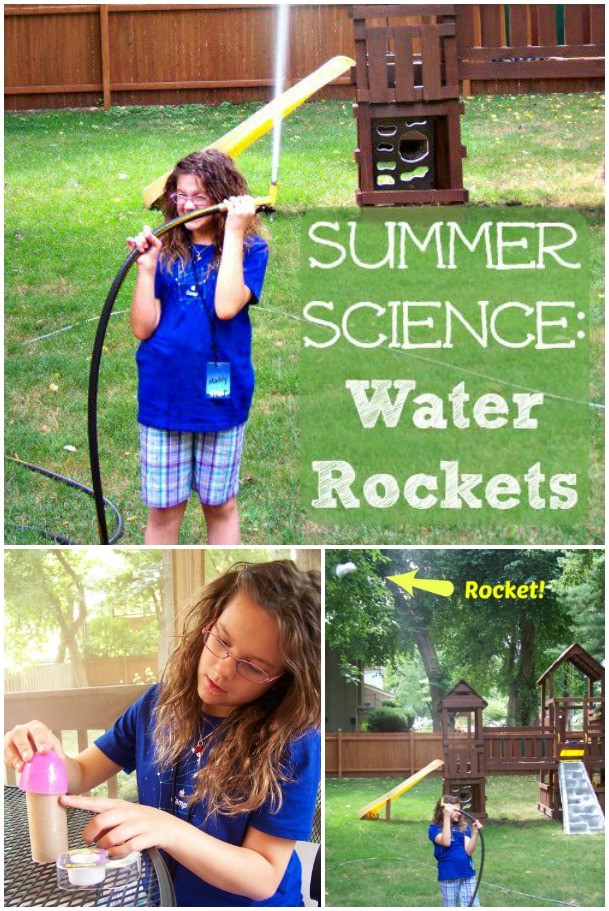
DIY Easy Water Rockets for Kids
At our house, we’ve had an ongoing discussion about the science behind forces (Newton’s Laws of Motion). This began as a result of a science camp my dauther attended a few weeks ago.
And of course, as with many kids, something they learn takes a few days to sink in and then when they are faced with a real life situation, they begin to ask questions.
The first question — What’s a force?
Because in camp, they explained that a force could cause an object to move (or stop moving as the case may be) BUT they didn’t really explain what types of forces existed.
So we decided to make a quick & easy project to talk about a little about physics and forces — and to enjoy some time to cool off in the backyard.
As with many of our activities, I always like to tie in a few books to read before or after the project. For a discussion on physics and forces, try one of these:
Forces Make Things Move (a Read and Find Out Science book) is a wonderful introduction for ages 3 – 8 years old to the various forces that exist in our environment. Fun drawings quickly help kids identify the forces that can be found in daily activities!
Motion: Push and Pull, Fast and Slow is another great look at basic physics of movement for kids! The colorful pages, fun facts , beginner vocabulary and easy experiments included in this book make it perfect for ages 5 – 10 years old.
DIY Water Rockets with Cardboard Tubes
I’m not into complicated crafts so easy DIY water rockets were just perfect! And a big plus – they can be made from materials you have around the house.

Here are the supplies you’ll need for the activity:
- Empty paper towel or toilet paper tubes
- A plastic egg that is large enough to cover the top of your tube
- Scotch tape (don’t use any heavy tape or it will weigh down your rocket)
- Tin foil
- A garden hose with a spray nozzle attachment
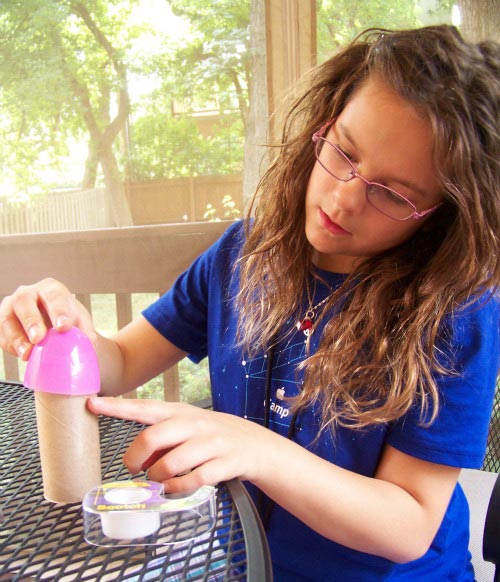
First, tape half of the plastic egg onto the top of the tube. It doesn’t have to be completly taped on — just enough so that it won’t move around as you complete the rocket.
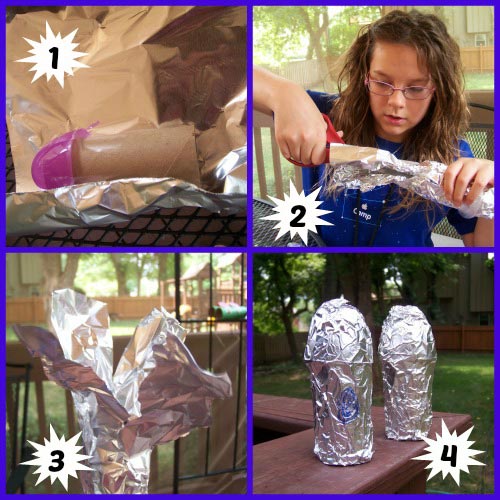
Then roll the tube and egg top in a piece of tin foil so it covers the entire thing. Fold over the extra foil at the top to cover the plastic egg.
In Step 2 above, we cut the bottom of the foil in four places so that we could easily tuck it into the tube.
You can see in Step 3 that it looks like you will have four thinner sections of foil — fold each of these into the bottom of the tube.
*** This is important because it will protect the cardboard from getting wet so your rocket with last longer.
Ta-da – easy, peasy foil rockets that are now also pretty waterproof!
Water Rocks and Physics for Kids
So, back to our discussion of forces. The goal of this activity is to show that water can be a powerful force.
And water from your hose can act as a weak or strong force on your rocket depending on how lightly you pull the handle as you launch it.
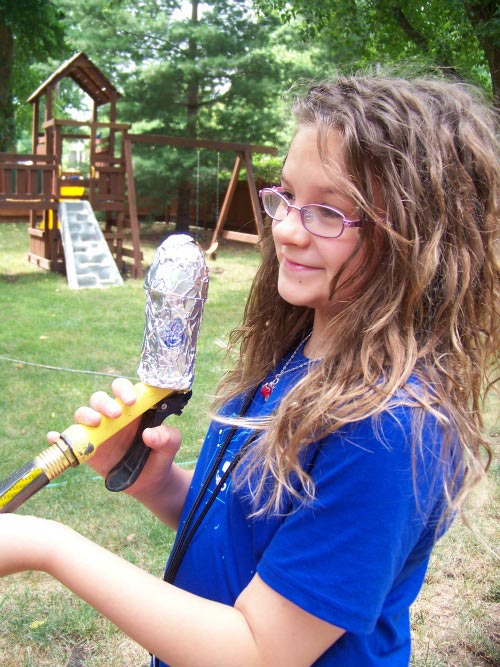
Prelaunch mode!
Place the open end of your rocket over the spray nozzle and turn on the water to the hose.
Here’s where we say: “An object at rest will remain at rest …”
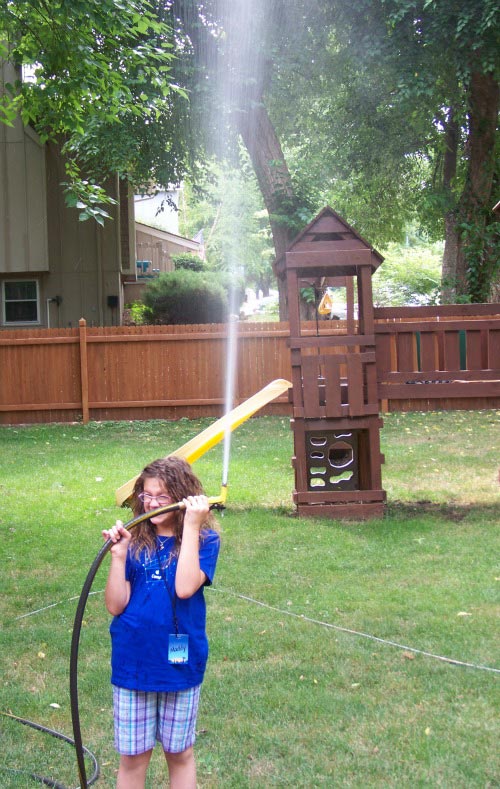
Blast Off!
Pull the handle of the hose for one quick and short spurt of water to come out. You can try this without the rocket at first to show the kid that they don’t need a ton of water.
“… until acted upon by a force.”
So, in our rocket experiment the force was the stream of water that propelled the rocket into the air.

Teaching Kids about Forces: Gravity
And as a follow-up lesson, the force of gravity brings the rocket back down to Earth.
We experimented with the amount of water and how high the rocket would fly. The stronger the spray of water, the higher the rocket would fly.
These were the perfect rockets because they are light, can be used quite a few times and won’t hurt if they come back down and hit you in the head.
And big bonus — it was great to cool off under the hose on a hot afternoon!
Kids Books about Space
If you’d like to explore space through books, make sure to check out the books on our 12 Great Books about Space & the Solar System booklist!
The nonfiction Cat in the Hat Learning Series has a really fun book for the topic – There’s No Place Like Space: All About Our Solar System.
Kids will also enjoy these books about rockets & space ships:
Rockets and Spaceships (DK READERS)
More Easy Science Experiments:
20 Simple Science Experiments for Your Backyard
The Science of Sound Waves (aka – How to Make a Gong!)




